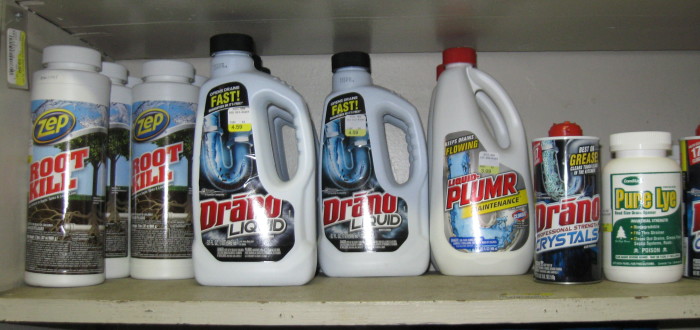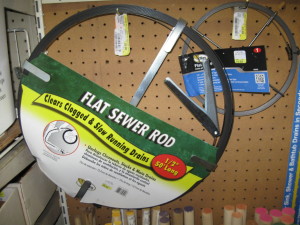Last week, as you may recall, I was complaining about all the rain. Well, it’s still raining and all that water has to go somewhere. I spent part of yesterday trying to get my Mom’s garage drains flowing again, so I thought that it might be good to talk about storm drains around the home. Storm water drainage varies quite a bit around the country, so what I’m saying may only apply to Ohio and other areas with similar climates.
Unlike some areas of the country we get quite a bit of rain around here, and getting it away from your home is a vital part of keeping your house in good condition. Too much water around the foundation can lead to a musty or leaky basement, let alone a flooded basement or even heaved foundation walls. All of these things can be minimized or eliminated by making sure that your drainage system is working properly.
First we’ll cover how most systems are set up and how they are supposed to work. Most homes have gutters that drain water from the roof and down the downspouts. Most people understand this and the need to keep gutters and downspouts clear (even if they put off doing it, like me). When the water gets to the ground however, the job is only half done. If the downspouts just end and dump the water on the ground, this isn’t good. Deflector trays are made to direct the water away from the foundation are a minimum. If your yard slopes away from the house this might be OK. Other times the downspouts mysteriously go straight down into the ground and who knows where the water goes? There should be a set of drainage pipes that continue to lead the water to the nearest creek, storm sewer, swail or whatever. The important thing is to make sure that these drains are working.
These drains are usually made of clay tile in older homes, and plastic in newer ones. They can get clogged by dirt or tree roots, and if they do the water will just back up and pool around the foundation – Bad News! There is also the possibility that they were not installed correctly in the first place. The ones at our cottage just went about a foot into the ground and just stopped, needless to say they didn’t drain much.
If they seem to be clogged there are a couple things that you can try. They make a product called the Drain King that screws on the end of a garden hose and is inserted in the end of the pipe. When you turn on the water it inflates and pulses water down the drain to hopefully wash away the obstruction.
A plain hand drain snake can be fed down the hole to see if you can get it flowing again. If that doesn’t work a power drain snake with a root cutter on the end is often the answer. These can be rented from your local hardware store, or you can get a sewer service to bring one out if you don’t hanker wrestling with a filthy steel boa constrictor. This will usually get the drains working again, but once you have roots in your drain (and believe me, when you pull the snake back out of the drain, you’ll know!) they will come back unless you take action. Short of digging up the drain and rerunning it, the best thing to do is to regularly put an anti-root product down the drain. You have to do it regularly as it only works on the roots when they are small. Wait too long and the roots will get big and you’ll be back to the snake again.
Maintenance is the name of the game, so keep your drains open, or we’ll see you later – at the old hardware store.



